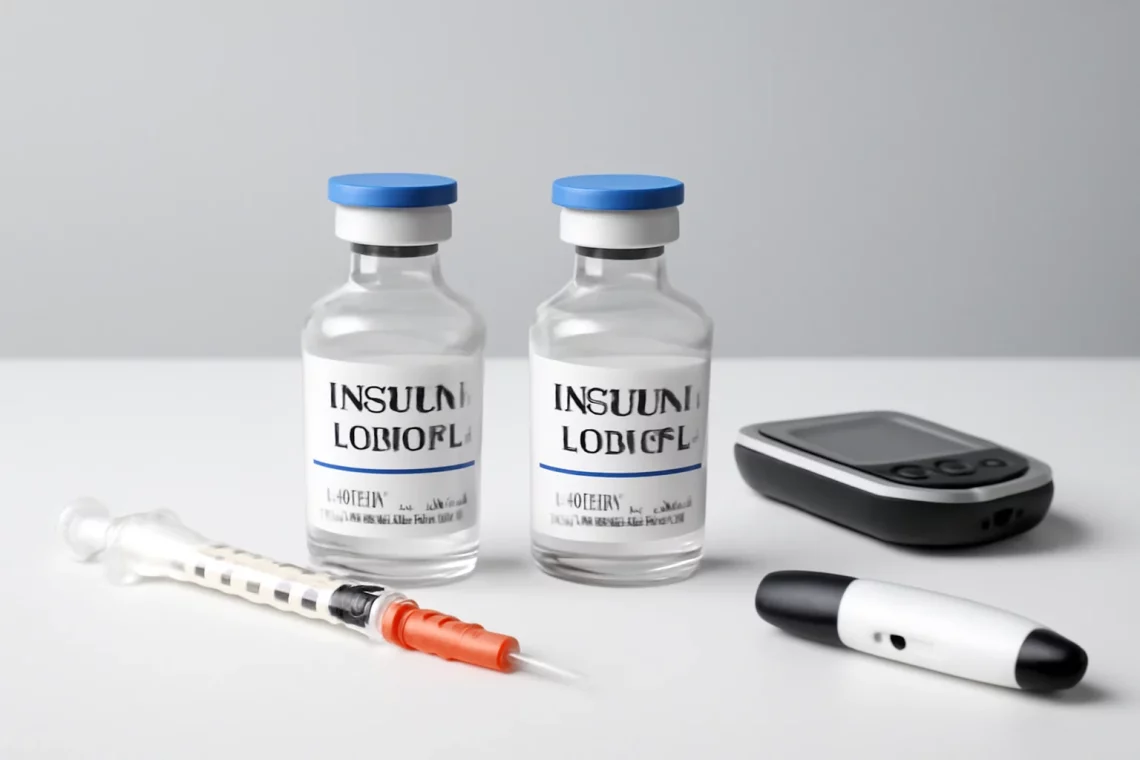
Insulin Aspart vs Insulin Lispro: Which One Is Right for You?
Insulin therapy is a cornerstone in the management of diabetes, particularly for individuals with type 1 diabetes and those with advanced type 2 diabetes. Among the various forms of insulin available, rapid-acting insulins such as Insulin Aspart and Insulin Lispro are widely used due to their ability to mimic the body’s natural insulin response to meals. Both types of insulin are designed to provide quick control over blood sugar levels during and after eating, making them essential tools for diabetes management.
Understanding the differences and similarities between Insulin Aspart and Insulin Lispro can help patients and healthcare providers make informed decisions regarding insulin therapy. These two insulins are often compared due to their rapid onset, short duration of action, and similar mechanisms of action. However, subtle differences in their pharmacokinetics, formulation, and patient preferences can influence the choice of one over the other. In this article, we will explore the characteristics of Insulin Aspart and Insulin Lispro, helping to clarify their roles in diabetes management.
Understanding Insulin Aspart
Insulin Aspart is a rapid-acting insulin analog that was developed to improve glycemic control in individuals with diabetes. It is derived from human insulin but has been modified to allow for a faster onset of action. This insulin is typically administered subcutaneously and is often taken before meals to help manage postprandial (after meal) blood glucose spikes.
One of the defining features of Insulin Aspart is its rapid absorption into the bloodstream. Upon injection, it begins to work within approximately 10 to 20 minutes, peaking around 1 to 3 hours after administration, and its effects can last for about 3 to 5 hours. This rapid action is particularly beneficial for people who need to control blood sugar levels closely around meal times.
The formulation of Insulin Aspart includes a small change in the amino acid sequence of the insulin molecule, which helps prevent it from forming hexamers (a complex of six insulin molecules). This prevents delayed absorption and allows for quicker action, enabling users to inject the insulin just before a meal, rather than having to wait for a longer-acting insulin to take effect.
Insulin Aspart is commonly used in conjunction with long-acting insulins to provide a comprehensive approach to diabetes management. It can also be combined with other antidiabetic medications as part of a broader treatment plan. Patients often appreciate the flexibility that Insulin Aspart provides, as it allows for more spontaneous eating patterns without compromising blood sugar control.
In terms of side effects, Insulin Aspart is generally well-tolerated, but like all insulins, it carries a risk of hypoglycemia (low blood sugar) if dosed improperly. Patients are advised to monitor their blood glucose levels regularly and adjust their dosages as needed, based on their carbohydrate intake and physical activity levels.
Exploring Insulin Lispro
Insulin Lispro is another rapid-acting insulin analog that is frequently used in the management of diabetes. Similar to Insulin Aspart, it is engineered to provide a quick response to rising blood glucose levels following meals. Insulin Lispro also mimics the physiological insulin response more closely than regular human insulin, which is crucial for maintaining optimal blood sugar control.
The onset of action for Insulin Lispro is comparable to that of Insulin Aspart, typically beginning within 15 minutes after injection, peaking within 1 to 2 hours, and lasting for about 3 to 5 hours. This rapid action allows individuals to administer their insulin shortly before meals, which can lead to improved postprandial glucose levels and overall glycemic control.
The molecular structure of Insulin Lispro differs from that of human insulin, specifically in the positioning of two amino acids. This modification prevents the insulin from forming dimers or hexamers, promoting faster absorption into the bloodstream. As a result, Insulin Lispro has become a popular choice for many diabetes patients seeking flexibility in their meal timing and insulin administration.
Insulin Lispro is often used in conjunction with long-acting insulins to create a well-rounded diabetes management plan. Its rapid onset makes it especially useful for those who may eat irregularly or need to adjust their insulin doses based on their daily activities. Many patients report a preference for Insulin Lispro due to its reliability and effectiveness in controlling blood sugar spikes after meals.
As with other insulins, the primary concern with Insulin Lispro is the risk of hypoglycemia. Patients should be educated on recognizing the symptoms of low blood sugar and be instructed on appropriate response measures, such as consuming fast-acting carbohydrates. Regular blood glucose monitoring is essential to ensure that patients maintain stable levels and avoid complications.
Comparing the Two Insulin Analogues
When considering Insulin Aspart versus Insulin Lispro, it is important to examine their similarities and differences to determine which may be more suitable for individual patients. Both insulins are classified as rapid-acting analogues and share many characteristics, including their purpose, onset of action, and duration.
One of the most notable differences lies in their formulation. While both insulins are designed for rapid absorption, some patients may respond differently to each type. For example, an individual may experience more stable blood sugar levels with Insulin Aspart compared to Insulin Lispro, or vice versa. Therefore, the choice between the two often depends on personal preference and how a patient’s body reacts to each formulation.
Another factor to consider is the availability of each insulin. In some regions, one type may be more readily accessible than the other, which can influence a patient’s decision. Additionally, the cost of insulin can vary, and insurance coverage may impact which insulin a patient ultimately chooses to use.
Patient education and ongoing support from healthcare professionals are crucial in selecting the appropriate insulin therapy. Regular follow-ups can help to monitor blood glucose levels and assess the effectiveness of the chosen insulin. This collaborative approach allows for adjustments as needed, ensuring that patients achieve optimal glycemic control.
Ultimately, the decision between Insulin Aspart and Insulin Lispro should be made on an individual basis, taking into account factors such as lifestyle, eating habits, and how well blood sugar levels are managed with each insulin. Both insulins have proven to be valuable tools in diabetes management, and understanding their unique characteristics can empower patients to make informed choices.
**Disclaimer:** This article is for informational purposes only and does not constitute medical advice. Always consult a healthcare professional for medical concerns and before making any changes to your diabetes management plan.




